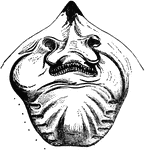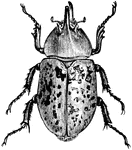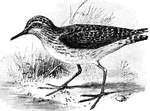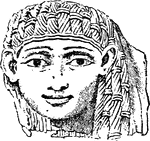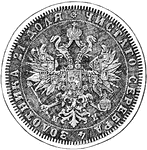
Yucca
"A plant may be operated on wherever the stem has become firm and woody; the top will not fail to make…
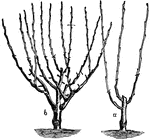
Dwarf-Tree Pruning
"This image gives a good idea of how these drawf trees are to be manipulated, a showing the first year's…

Pyramid Pruning
"a shows a young tree with its second year's growth, the upright shoot of the maiden tree having been…
Pruning
"The nature of the cut itself in pruning is of more consequence, especially in the case of fruit trees,…

Pruning
"The nature of the cut itself in pruning is of more consequence, especially in the case of fruit trees,…
Pruning
"The nature of the cut itself in pruning is of more consequence, especially in the case of fruit trees,…
Pruning
"The nature of the cut itself in pruning is of more consequence, especially in the case of fruit trees,…
Pruning
"The nature of the cut itself in pruning is of more consequence, especially in the case of fruit trees,…
Pruning
"The nature of the cut itself in pruning is of more consequence, especially in the case of fruit trees,…

Water Wheel
"When a water fall ranges between 10 and 70 feet, and the water supply is from 3 to 25 cubic feet per…
Anchovy
"A small fish, about a span long, much esteemed for its rich and peculiar flavor. It is not much longer…

Andromeda
"A genus of Andromeda polifolia of plants of the natural order Ericaceae, distinguished by a 5-valve…
Sandworm
"A small class of Articulated Animals, mostly included by Linnaeus in his class Verimes. They have a…

Anubus
"An Egyptian deity, styled Anepu on hieroglyphic monuments, was, according to mythology, the son of…
Humerus
"The humerus, which moves freely by a globular head upon the scapula, forming the shoulder-joint." —…

Male Cockroach
"A genus of Orthopterous insects, having an oval or orbicular flattened body, the head hidden beneath…
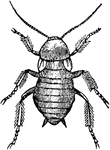
Female Cockroach
"A genus of Orthopterous insects, having an oval or orbicular flattened body, the head hidden beneath…

Cress
"A name given to many plants, of which the foliage has a pungent, mustard-like taste, and is used as…

Crown
"Crowns were originally garlands of leaves; and in this form they have probably been used as an ornament…

Crown
"Crowns were originally garlands of leaves; and in this form they have probably been used as an ornament…
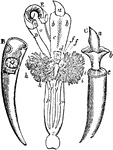
Dentalium
"Dentalium: B, the shell of Dentalium Entalis, broken longitudinally, showing the animal in a contracted…
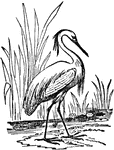
Egret
"A name often given to various species of Heron, particularly those which, at least during the breeding…

Thysanuran
"A typical Thysanuran (Machilis maritima). Female, ventral view. Mx1, Mx2, 1st and 2nd maxillae. ii-x,…

Scorpion
"Drawing from tlife of the Italian scorpion Euscorpius italicus, Herbst, holding a blue-bottle fly with…

Honey Bee
"Head and Appendages of Honey-bee (Apis). a, Antenna or feeler. g, Epipharynx. mxp, Maxillary palp.…

Ball-bearing Hub
"A ball-bearing hub with outward cups. The hub-shell H is turned out of mild steel, and the cups C are…

Cup-adjusting Hub
"One end of the cup-adjusting hub, with inward bearings. The cones are formed of one piece with the…

Brank
"Brank, or Branks, an instrument and formerly used in Scotland, and to some extent also in England,…
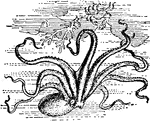
Octopus
"A genus of dimiliarly known as cuttle-fishes. They have eight arms, each with two rows of suckers,…

Collecting Top
"Prior to the introduction of the cup and cone, a form of tunnel-head in which no valve or cone exists…

Alligator Squeezer
"Formerly the balls were squeezed by an "alligator" or "crocodile" squeezer, and were then "shingled"…

Center of Gravity
"Why does a person carrying a weight upon his back stoop forward? In order to bring the center of gravity…

Center of Gravity
"Why does a person carrying a weight upon his back stoop forward? In order to bring the center of gravity…
Gold Plate
"It is of gold plate, so thick as to require no "piping" at the back to sustain it; but in general the…
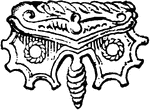
Butterfly Brooch
"The head of a pin or brooch evidently suggested by a butterfly, a characteristic of the gold work of…
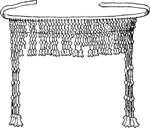
Diadem
"Diadems or head fillets of pure hammered gold cut into thin plates, attached to rings by double gold…
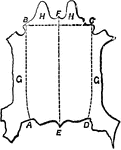
Hide Divisions
"The hides now come to be trimmed and prepared for tanning in the shape in which they are intended ultimately…

Catadioptric Holophote
"Catadioptric Holophote.—Part of the anterior hemisphere of rays is intercepted and at once parallelized…
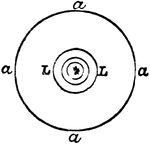
Catadioptric Holophote
"Catadioptric Holophote.—Part of the anterior hemisphere of rays is intercepted and at once parallelized…
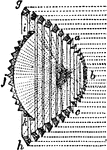
Dioptric Holophote
"Perfect Form of Dioptric Holophote for an Oil Flame.—By combining the back prisms ga, hc just described…
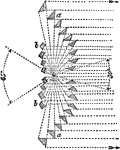
Swans Designs
"Professor Swan's Designs.—Among several ingenious arrangements and new forms of agents proposed by…
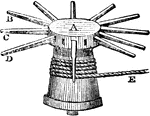
Capstan
"The capstan, in universal use, on board of ships, is an axle placed upright, with a head, or drum,…
Atmospheric Pressure
"The pressure of the atmosphere may be easily shown by the tube and piston. suppose there is an orifice…
